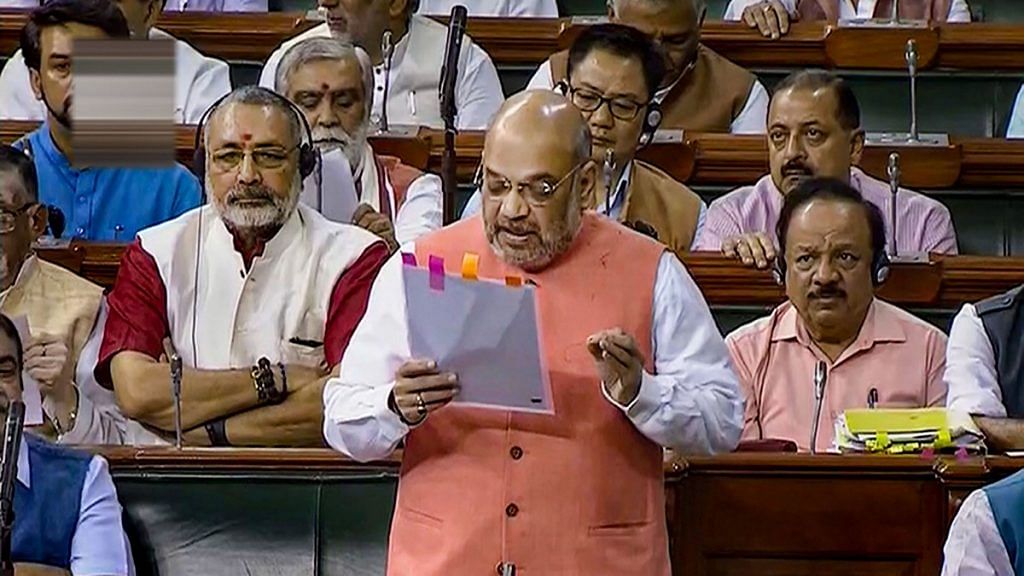There is no doubt that the Narendra Modi government’s decision to remove special rights for Jammu and Kashmir’s administration and to convert the state into two Union Territories is ideological and political. The removal of Articles 370 and 35A has been a lynchpin of the BJP’s political agenda since its Jana Sangh days.
The only recent survey to have sought the opinions of residents of Jammu and Kashmir on any change in how their state should be administered was conducted after the 2014 Lok Sabha election in the state. The Lokniti programme at the Centre for the Study of Developing Societies (CSDS) asked respondents in a representative sample survey conducted in the state what they believed would be the best solution to the Kashmir issue. Nearly half of the respondents did not answer; among those who did, a larger number favoured more independence than those who sought less powers or autonomy for the state. Just 0.2 per cent wanted Article 370 amended.
If it’s not what the people of the state want, why is bringing Jammu and Kashmir under the central government’s direct rule so important? In his speech in the Rajya Sabha as he introduced the clutch of bills, Home Minister Amit Shah said that people of “the country” wanted to know why Article 370 was still in operation in Jammu and Kashmir, and why “despite getting so much money, its people are still poor”. “Article 370 ensures there is no PPP model, no private investment in the state. 370 ensures the healthcare in Jammu and Kashmir suffers, no doctor wants to go there. 370 ensures there is no right to education for the children of Kashmir,” Shah said.
J&K and Hindi belt states
However, the truth is that while Jammu and Kashmir undoubtedly lags in job creation, investment and growth, the state is not nearly as backward on other development indicators as several Hindi belt states that have had no such exceptional laws, and have in fact been ruled for substantial periods by the BJP itself.
In the latest Multidimensional Poverty Index (MPI) created by the Oxford Poverty and Human Development Initiative, using official Indian statistics on health, education and access to assets, Jammu and Kashmir does not perform well, but is still ranked 15th out of 36 states and Union Territories, with all the Hindi belt states performing worse. Jammu and Kashmir does particularly well on education indicators.
Yes, there are undoubtedly disparities between the districts of Kashmir division and those of Jammu division. In the MPI and its sub-components, the 10 districts of Jammu lag behind those in Kashmir division, except Jammu and Samba districts.
Also read: Modi’s Kashmir move is biggest test for Indian democracy – and for the silent liberals
Being a Muslim-majority state, Jammu and Kashmir is often characterised as experiencing a population explosion. The truth could not be further from this mischaracterisation. The state’s total fertility rate – the average number of children that a woman from the state can expect to have in her lifetime – is down to 1.6 as per the latest official data, which is even lower than the rate in Kerala, and lower than those in several developed economies including the United States and the United Kingdom.
Jammu and Kashmir undoubtedly lags behind others in attracting investment, creating jobs, and becoming a manufacturing or services hub. Yet, its poor performance is still better in many aspects than those of the Gangetic belt states. The per capita domestic product of Jammu and Kashmir as of 2016-17 (the year for which all-India data is available) is low, but higher than most other northern states.
Jammu and Kashmir’s unemployment rate was lower than the national average as of 2017-18, when the Periodic Labour Force Survey was conducted by the National Sample Survey Office. It ranked 11th out of 21 states considered for the JustJobs Index created by the Azim Premji University and the JustJobs Network to study the creation of good quality jobs, above several more developed states, including the northern states and Gujarat.
Under-developed, Jammu and Kashmir certainly is. But making the case that these body changes to the state’s administration were needed to develop it is a case that will have to rely on propaganda – because the facts do not support it.
The author is a Chennai-based data journalist. Views are personal.
